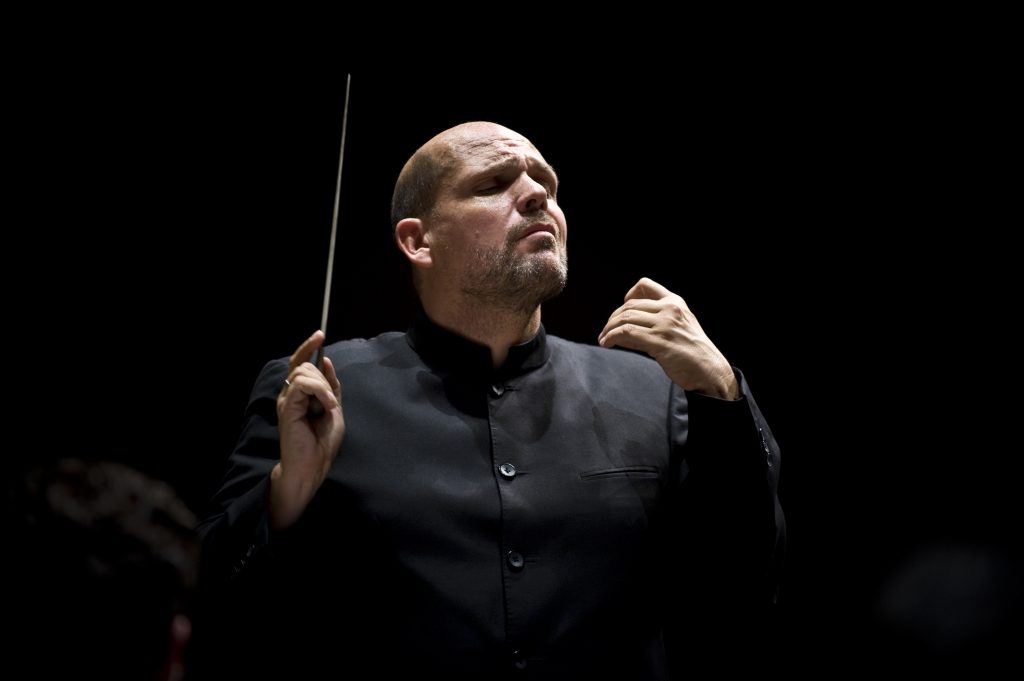Rouse’s Fifth Symphony proves an instant classic with powerful sendoff from van Zweden, Dallas Symphony

Jaap van Zweden conducted the Dallas Symphony Orchestra in the world premiere of Christopher Rouse’s Symphony No. 5 Friday night.
A full orchestra at high volume, including a noisy battery of percussion, opened Friday night’s concert at Meyerson Symphony Center as the Dallas Symphony Orchestra and music director Jaap van Zweden presented the world premiere of Christopher Rouse’s Symphony No. 5.
Over the past thirty years, the American composer has steadily produced an impressive row of symphonies (along with a substantial body of other works). With this new addition to the list, he can stake claim to the title of the leading American symphonist of our time.
Several distinctive aspects of Rouse’s Fifth Symphony emerge on first hearing. Typical of his orchestral music, textures are thick, with repeated shifts from dense dissonance to an almost romantic lyricism. Yet these alternating elements are woven together with dramatic, often surprising musical gestures. Rouse is not afraid to make loud noises, nor is he afraid to seduce the listener with a sweet melody, at times echoing the spacious, open-air textures of mid-20th-century compatriots like Copland and Hanson.
The noise and drama are, however, convincingly contained within a clearly organized structure based on classic four-movement symphonic form, albeit here in a single unbroken canvas. Lyricism and snippets of stringent imitative counterpoint follow close on the heels of the opening explosion, leading through a somewhat reflective development section and even more intense recapitulation. Without break, a richly resonant Adagio emerges, revolving relentlessly, with ominous interjections from the tympani and brass, toward the inevitable mad Scherzo.
And that’s where Rouse (taking a hint from Beethoven’s Fifth Symphony, as Rouse admits in his program note), begins to play with symphonic structure, allowing the Scherzo to drift back into the Adagio. There, once again without break, he throws us into a final Allegro with a blast from low brass and percussion. An unnerving brass motif signals the final coda, sweeping relentlessly toward a final major chord, quite as noisy as the opening exclamation half an hour earlier.
Rouse has no qualms about seducing the listener with harp chords and sweeping melodies, nor is he shy about jolting the audience with all the noise the modern symphony orchestra can muster. As in so many great Romantic and post-Romantic symphonies of the past, grand ideas are packaged in a logical form that gives the listeners, whether or not they are consciously aware of the structure, a sense of emotional pilgrimage—of moving into a spiritual and intellectual space not on any map. This listener, for one, will welcome the opportunity to hear, explore, and emotionally experience this work again.
It’s a tribute to Rouse that one of the masterpieces of the concerto repertoire, performed by one of the great pianists of the day, made a logical companion on the program to the new symphony. Van Zweden played up the dark elements of the orchestral introduction of Beethoven’s Piano Concerto No. 2, but soloist Emanuel Ax answered with a ray of light in the opening descending scale.
Ax lived up to his well-earned reputation with a perfectly balanced, magnificently controlled reading of this monument of joy and energy, traveling through a world of tone qualities and expressive nuances while remaining stylistically faithful to Beethoven’s neatly classical early style. Though there are no moments of grand virtuosity here, Ax’s sharply brilliant technique was obvious throughout, married perfectly with a powerful emotional and intellectual grasp of this music.
Respighi’s Pines of Rome, with its birdcalls, repetitious motifs, swoops of melody, and easy stereophonic brass effects, felt like a letdown after the amazing experience of the Rouse symphony and the Beethoven concerto. The orchestra and van Zweden pulled it all off nicely, however, and the audience, which clearly enjoyed this flashy programmatic showpiece, cheered loudly on cue.
The program will be repeated 7:30 p.m. Saturday. mydso.com; 214-692-0203.


